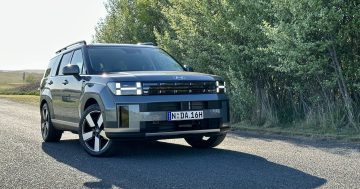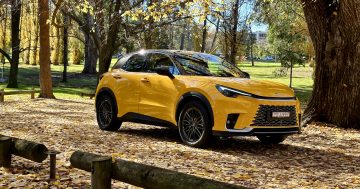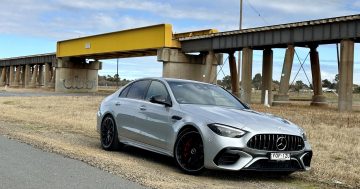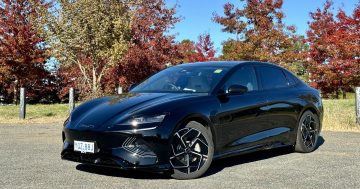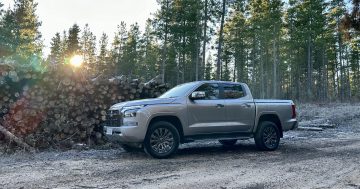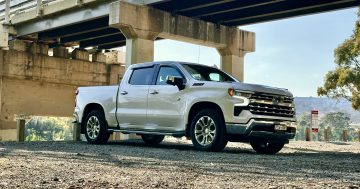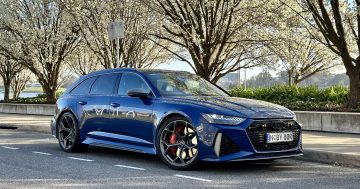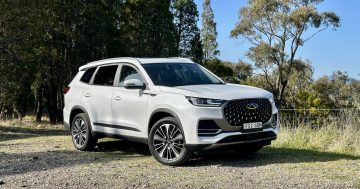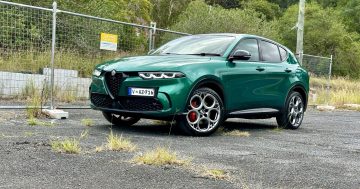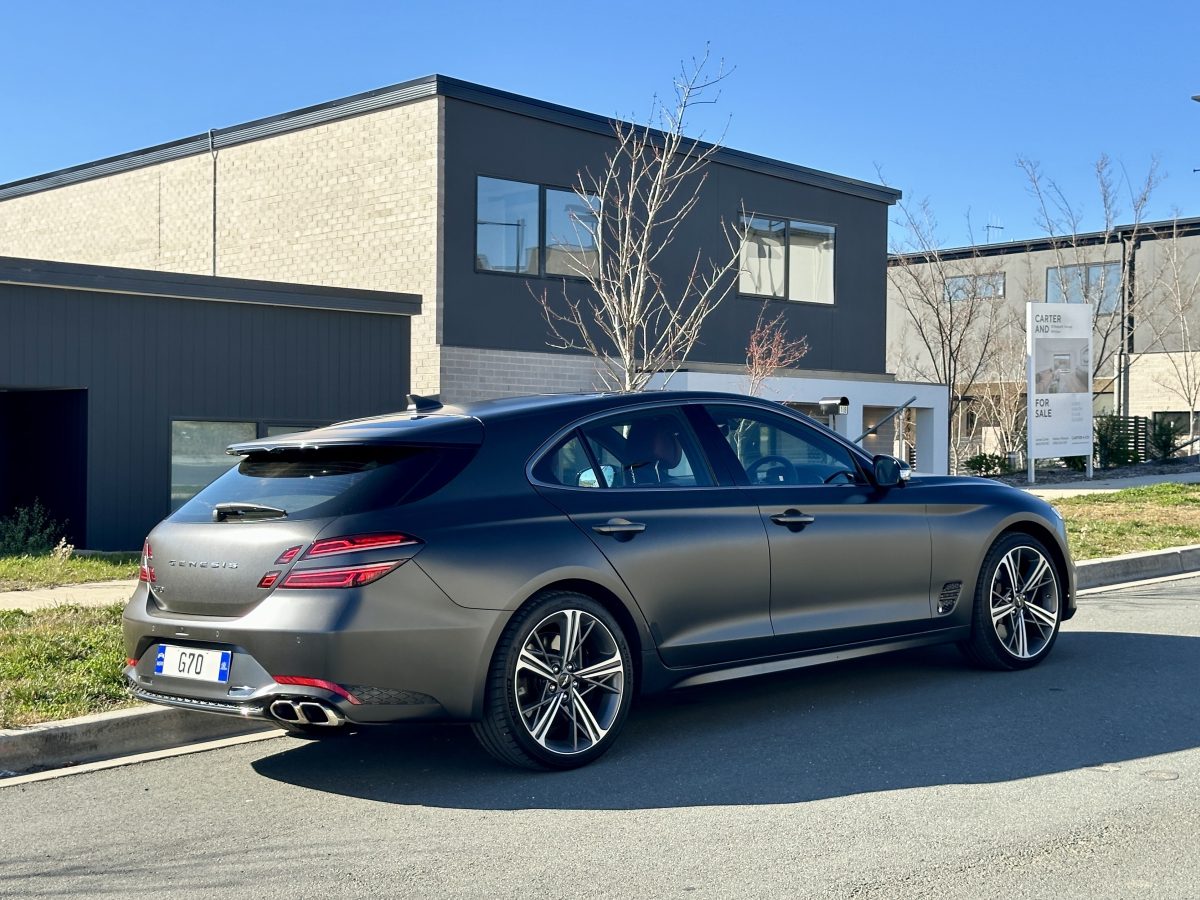
Don’t look at it. You can’t help it, can you? Photo: James Coleman.
If you can judge an era by its cars, the 1990s must have been incredibly dull. Headlights were no more than boxes for light bulbs. Rubber strips along the side were still the rage. Practicality was king, at the expense of everything else. Google ‘1990 Toyota Corolla’ for an exemplar.
Even the supercars of the time, meant to be the torchbearers for the automotive world, were weak and lily-livered. The Ferrari F50 was no match for the sheer greatness of the F40, and the Lamborghini Diablo was a glorified Chrysler with a lifespan of about five minutes.
This brings us to today’s Genesis G70 Shooting Brake, which has the opposite problem.
The accountants and engineers with their “actually” interjections were locked in a cupboard and the designers were given free rein. The result is predictably gorgeous. Especially in matt grey and lined with red quilted leather. Aston Martin gorgeous.
Unless that was just the winged Genesis badge that had passers-by confused – it does look a bit borrowed.
But this also means you have to cut your legs off to get in the back seats. And the boot, while bigger than the G70 sedan, is the wrong shape and size for anything you’re trying to put in there. I managed to stow away a pram, nappy bag and two small children, but that was it – full.
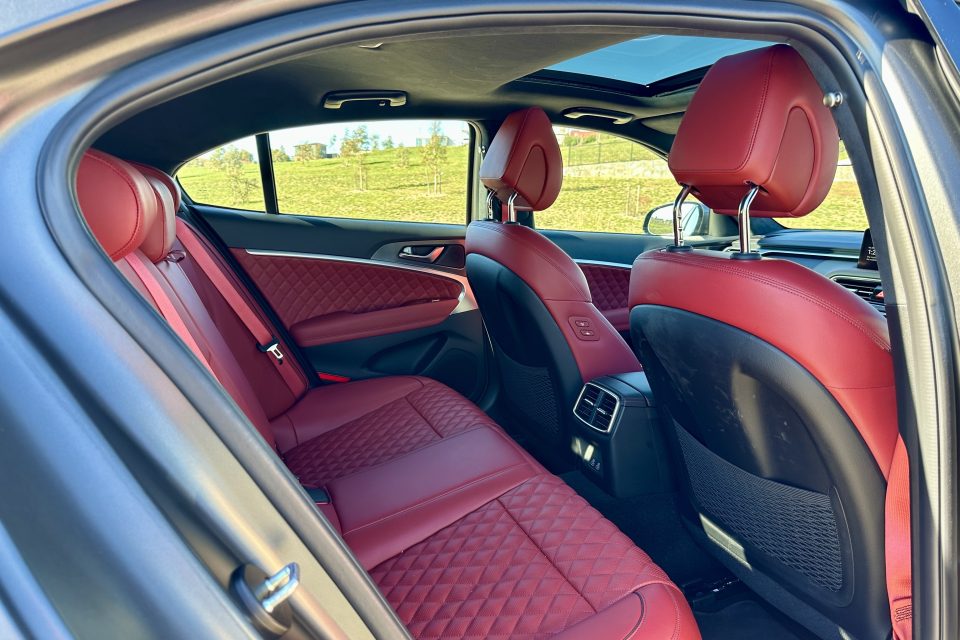
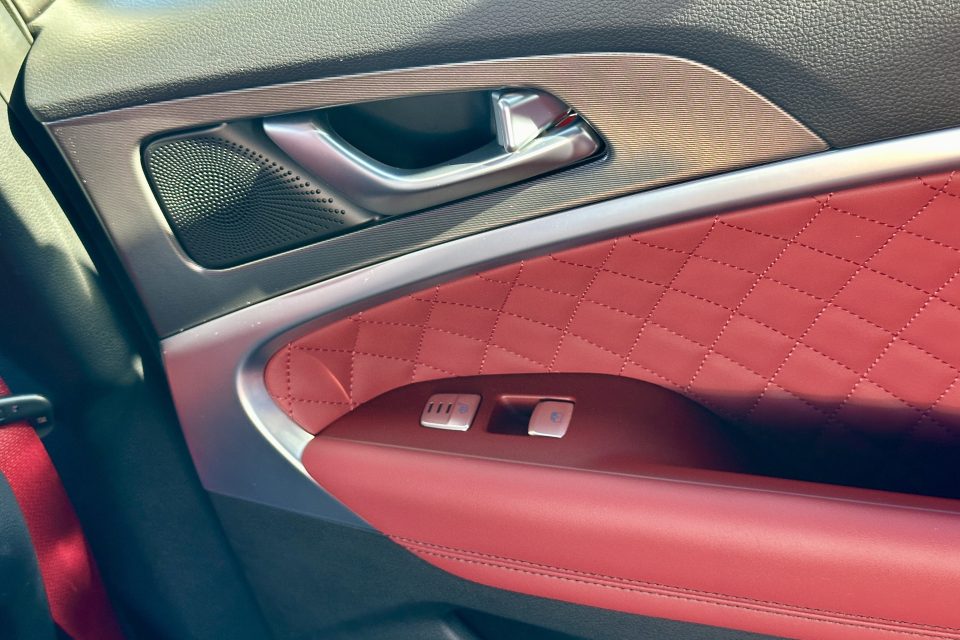
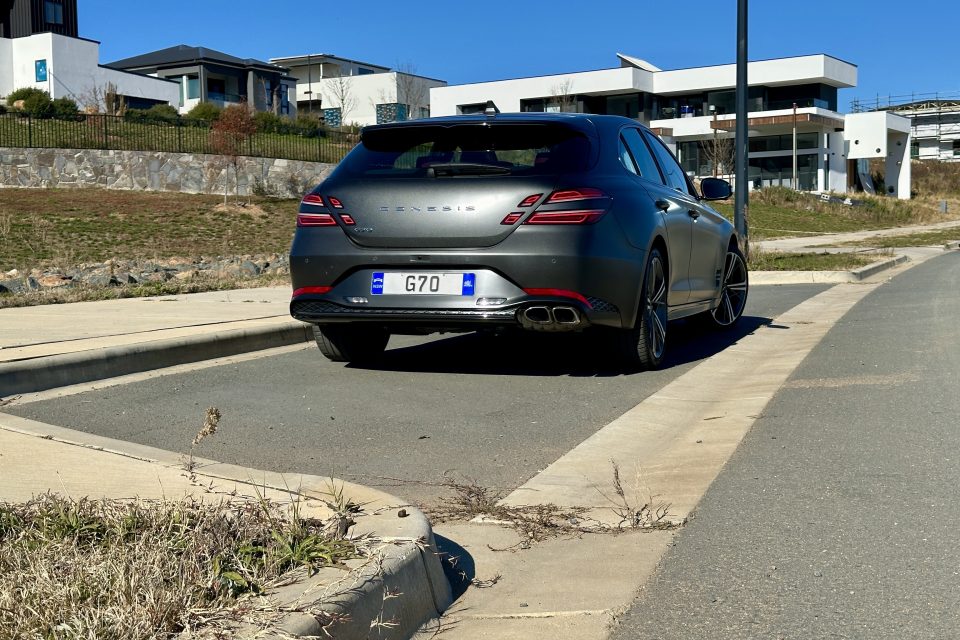
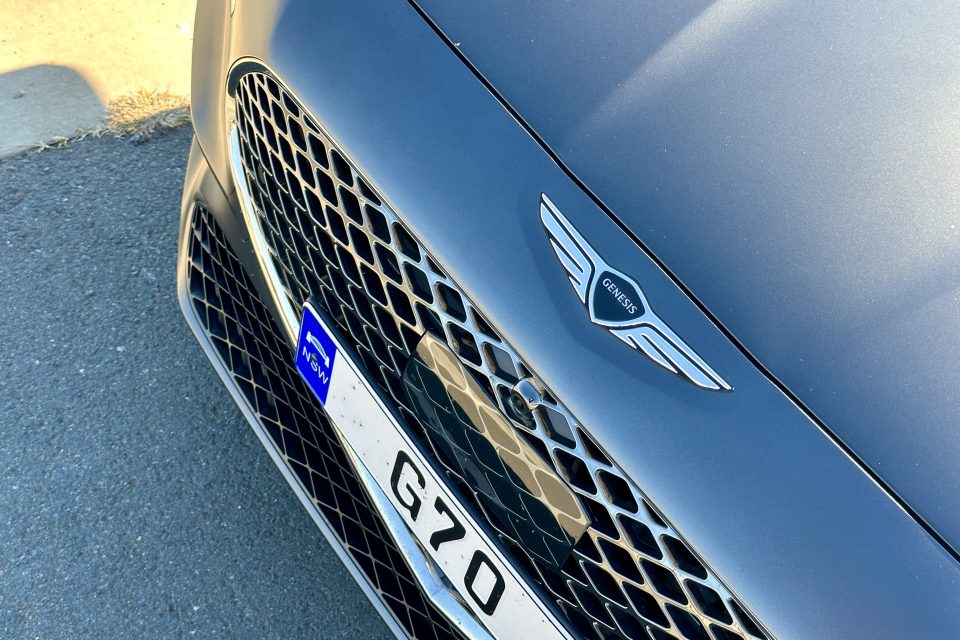

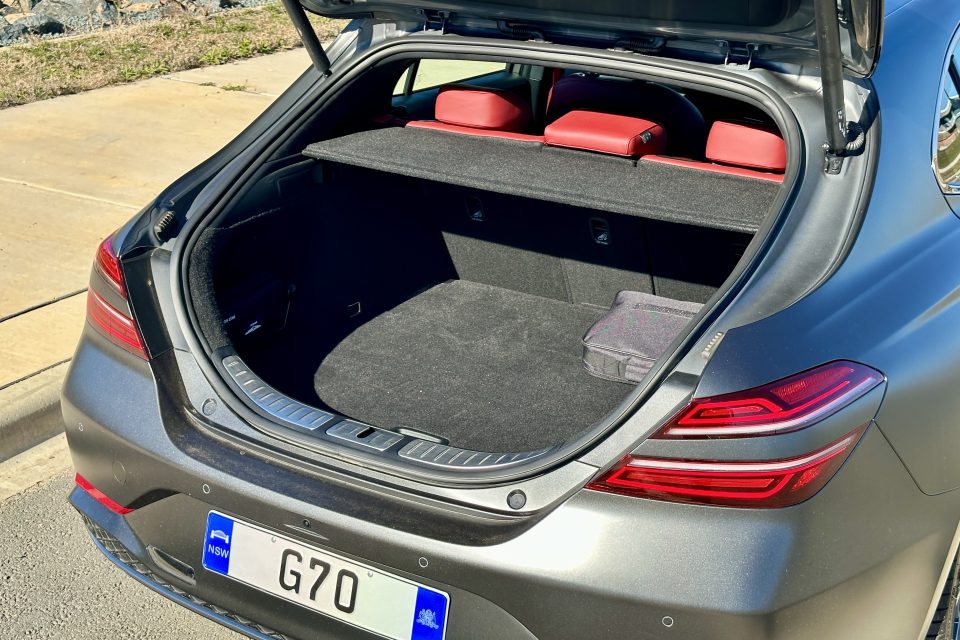
Unless you’ve been invited to a spud gun contest, the ‘shooting brake’ part of the name is a stretch. Think of it more as a hatchback.
The G70 name first came along in 2016 as a luxury sedan. It’s when Hyundai really got serious about taking on the likes of BMW and Lexus, and hired a man who knew the enemy, German designer Peter Schreyer (who also designed the Kia Stinger).
Today’s heavily facelifted version came along in late 2020, and the Shooting Brake a year later.
For 2024, Hyundai has sent it to wash for dinner and replaced the old-fashioned knobs for the air-conditioning and heated and ventilated seats with a new touchscreen – all lovely – but then added the single most annoying feature known to man – Speed Limit Assist.
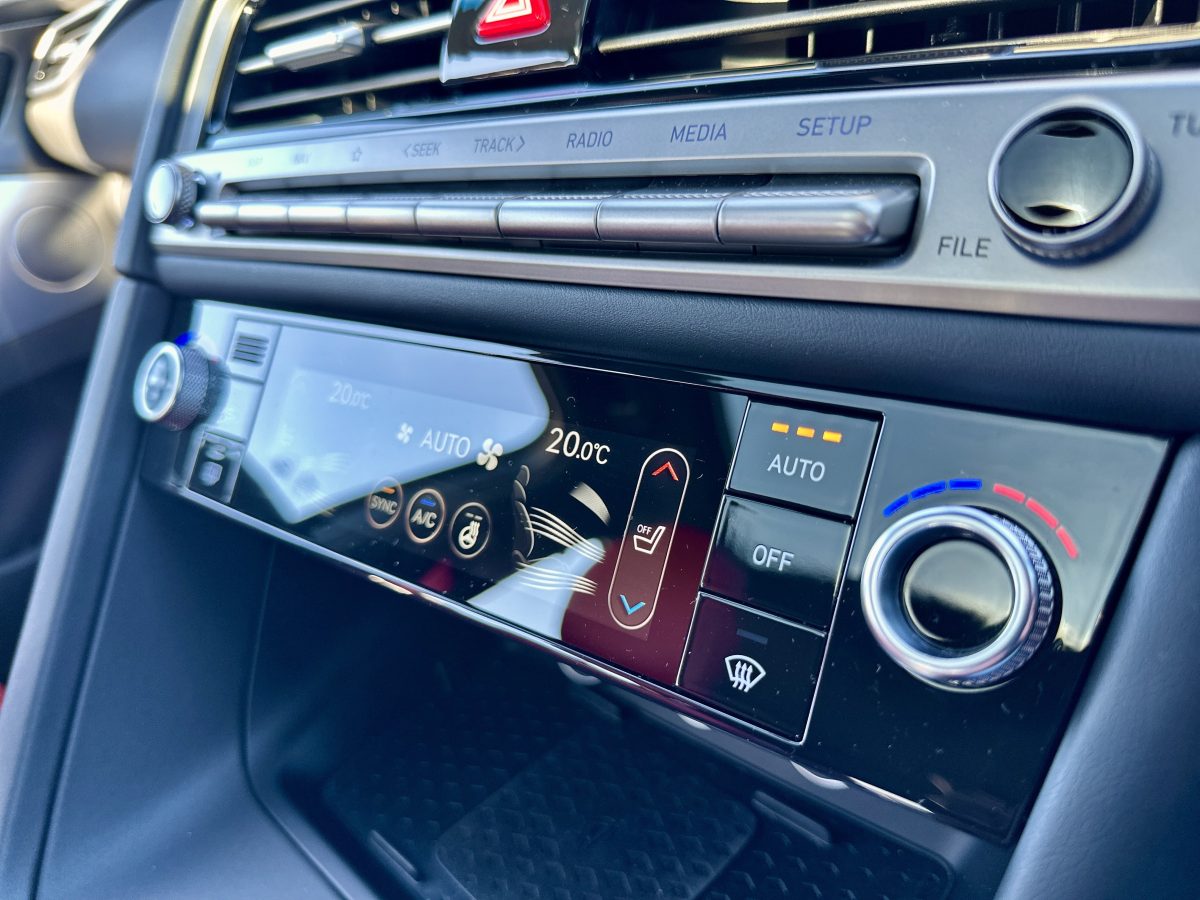
A heated steering wheel is the best thing ever this time of year. Photo: James Coleman.
Essentially, this takes the form of a loud beep whenever the speed limit changes and four beeps in a row when you exceed that limit by 2 km/h. In a car designed to ooze luxury everywhere else, this is an uncouth belch.
Fortunately, it’s also one that’s easily solved.
For a car that starts from $81,000 (or $4200 more than before), it can be markedly improved with a $5 roll of electrical tape from Bunnings. A few measures of this stuck over the windscreen-mounted camera and the electronic nanny is bound and gagged. All is peaceful again.
This means you can get on with actually enjoying the car. And there’s plenty here to enjoy.
Among the inspirational methods Peter must have brought over from Germany was how to make doors shut. Build quality is top-notch. Visibility is surprisingly good too, thanks to the surround-view cameras that offer 3D views.
Out on the open road, it’s supremely comfortable and stable, while also feeling light and quick on its feet.
The Shooting Brake misses out on the sedan’s twin-turbo V6, but when you consider the fact this shares the rear-wheel drive platform with the Kia Stinger and can charge through the corners of Paddys River Road without slip, the 2.0-litre turbocharged petrol engine is plenty.
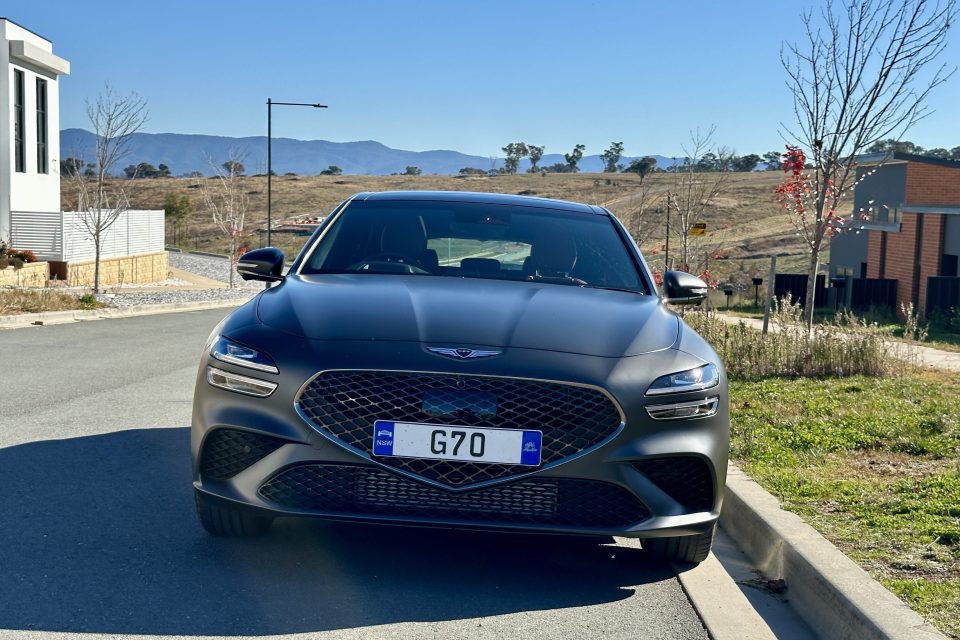

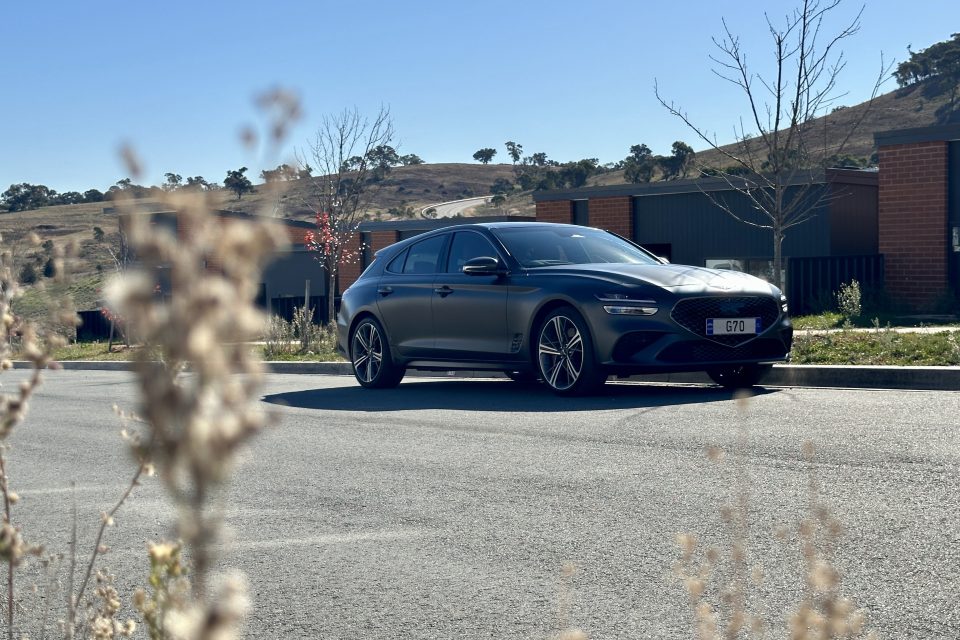

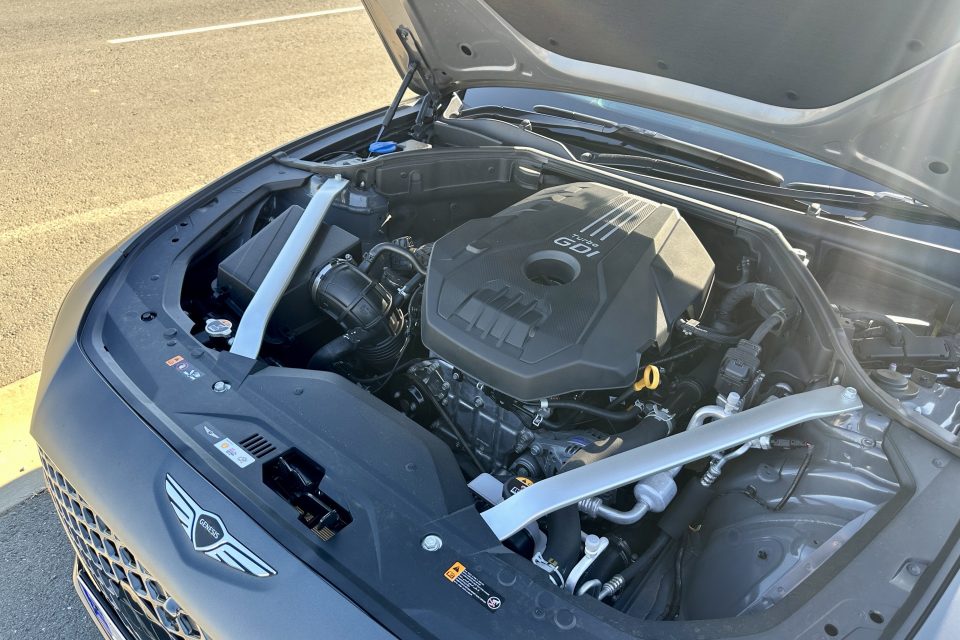


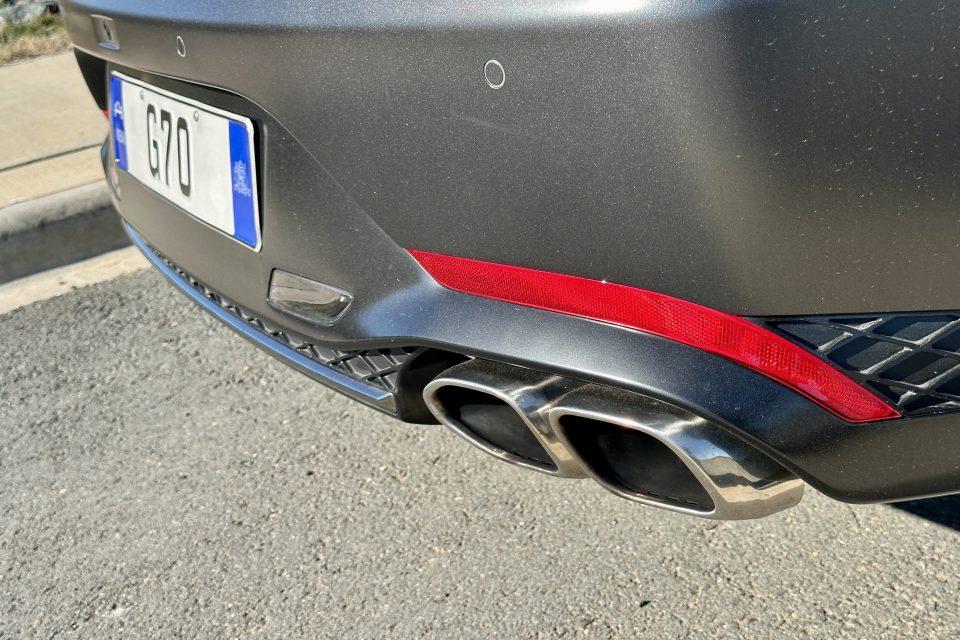
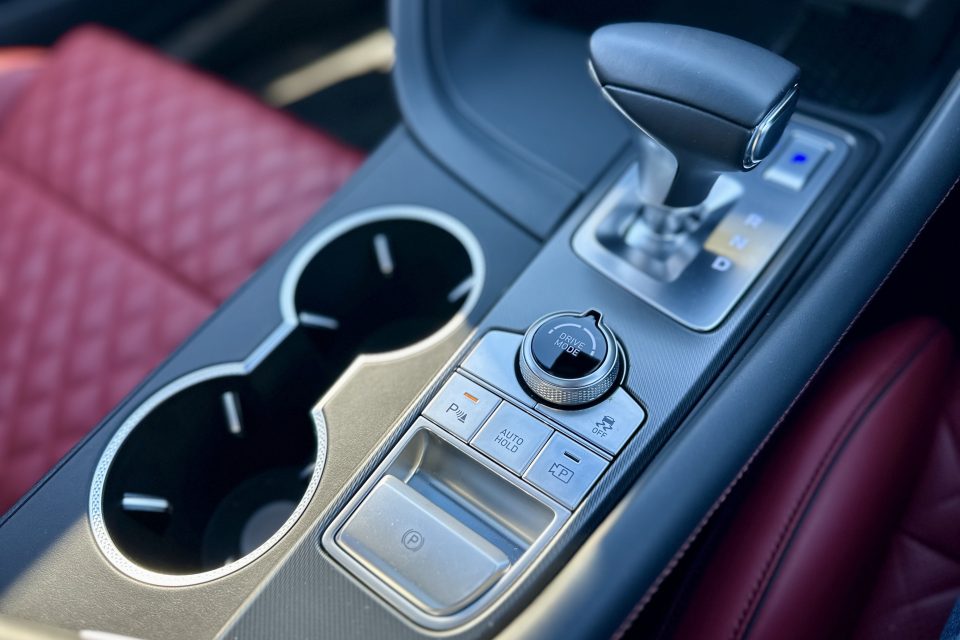
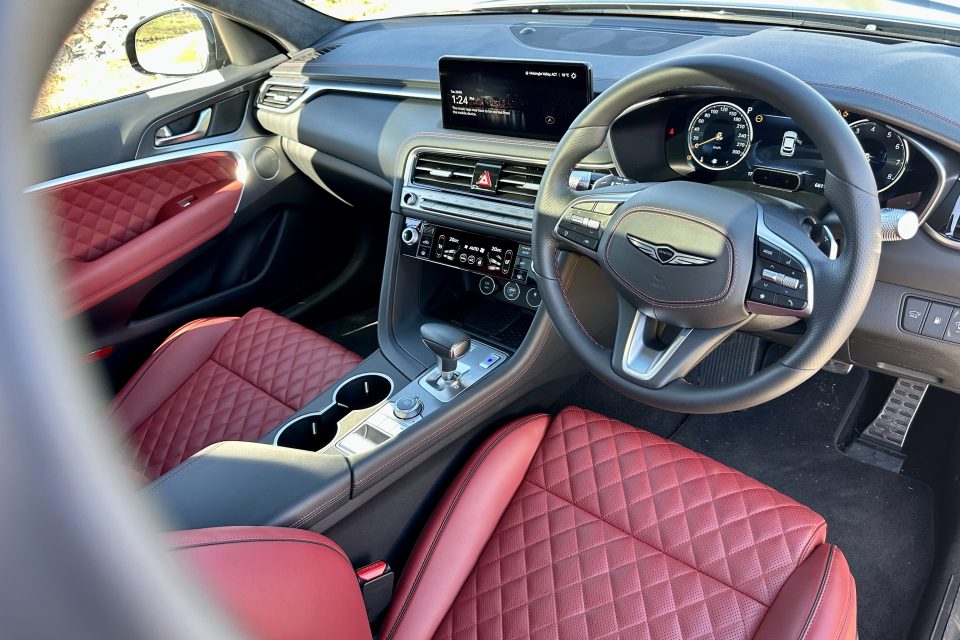
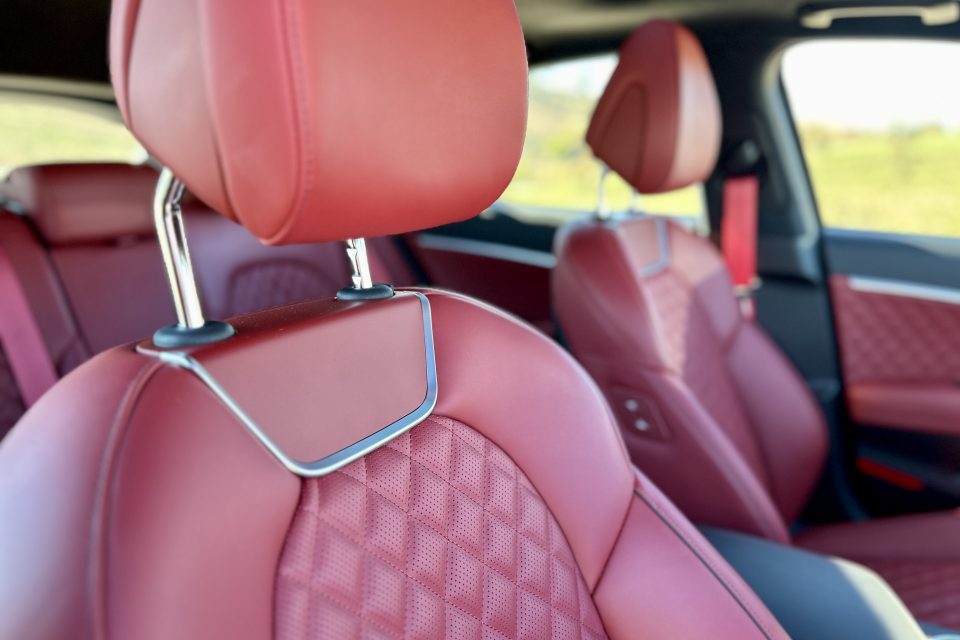
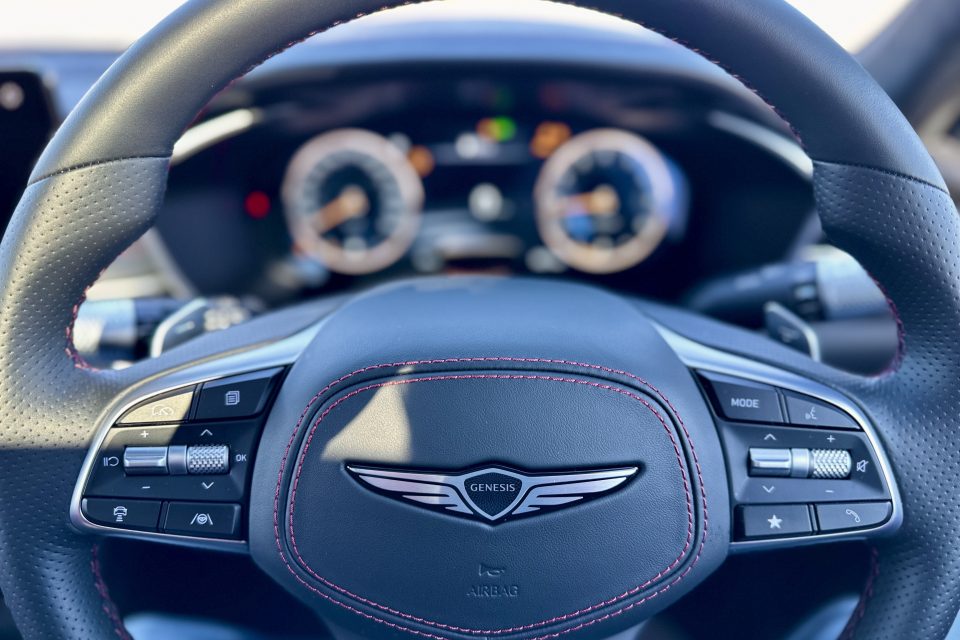
Much of the ‘rorty’ noise is disappointingly piped through the speakers though, so while you think you sound cool as your roar along, most passers-by will have only heard a particularly large leaf fall from the trees.
They will have looked though.
Yes, the G70 is getting on a bit. You have to plug your phone in to use Apple CarPlay. And the touchscreen has to pause and think about each finger tap. The steering also felt vague, even when dialled into ‘Sport’ mode.
But even after the $5 roll of tape, you’d be hard pressed to find quite the same blend of style and substance elsewhere for the price. Well, for the two human-shaped humans in the front seats, at least.
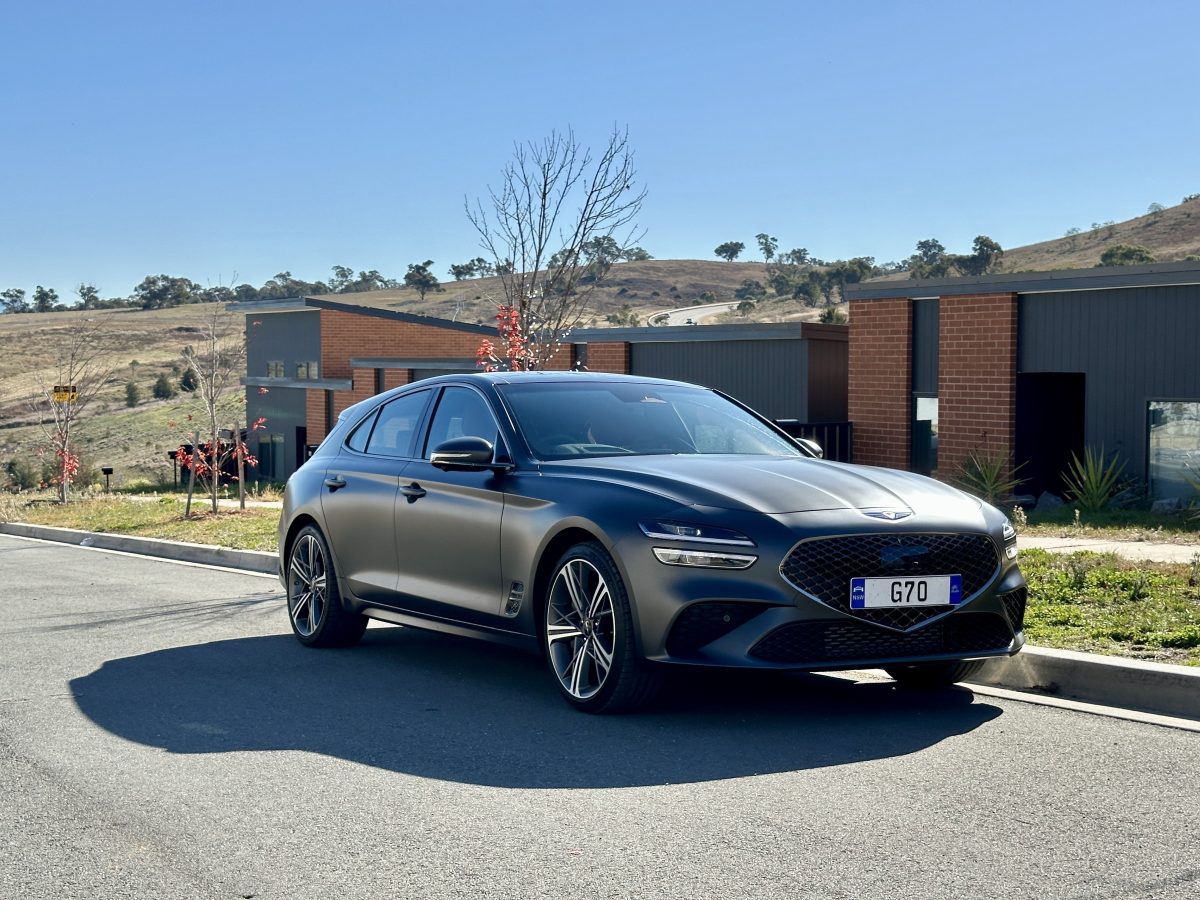
Looking stealthy in matt grey. Photo: James Coleman.
2024 Genesis G70 2.0T Shooting Brake Sport Line Luxury
- $81,000 (plus driveaway costs and roll of gaffer tape)
- 2.0-litre 4-cylinder turbo petrol, 179 kW / 353 Nm
- 8-speed automatic, rear-wheel drive (RWD)
- 9.1 litres per 100 km claimed fuel usage
- 0-100 km/h in 6.4 seconds
- 5-star ANCAP safety rating
This car was provided for testing by Hyundai Australia. Region has no commercial arrangement with Hyundai Australia.
Original Article published by James Coleman on Riotact.



